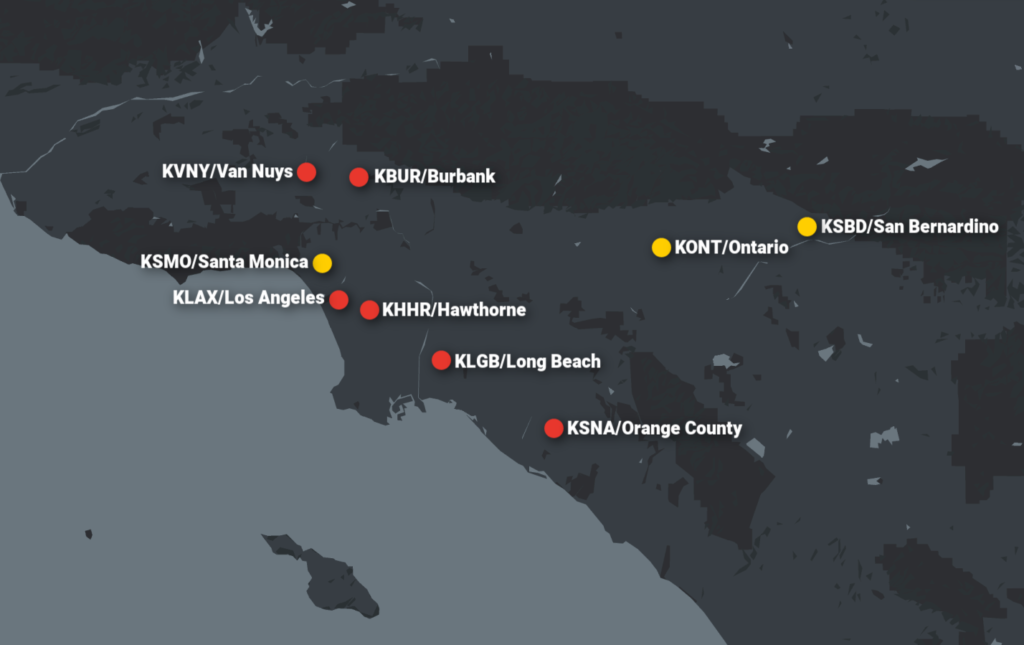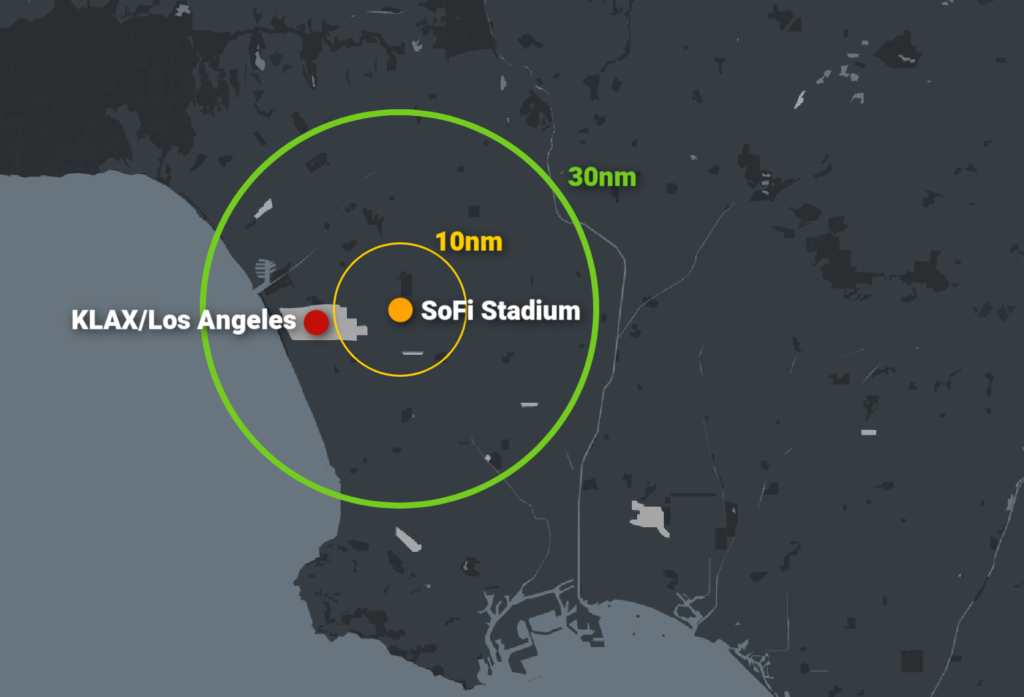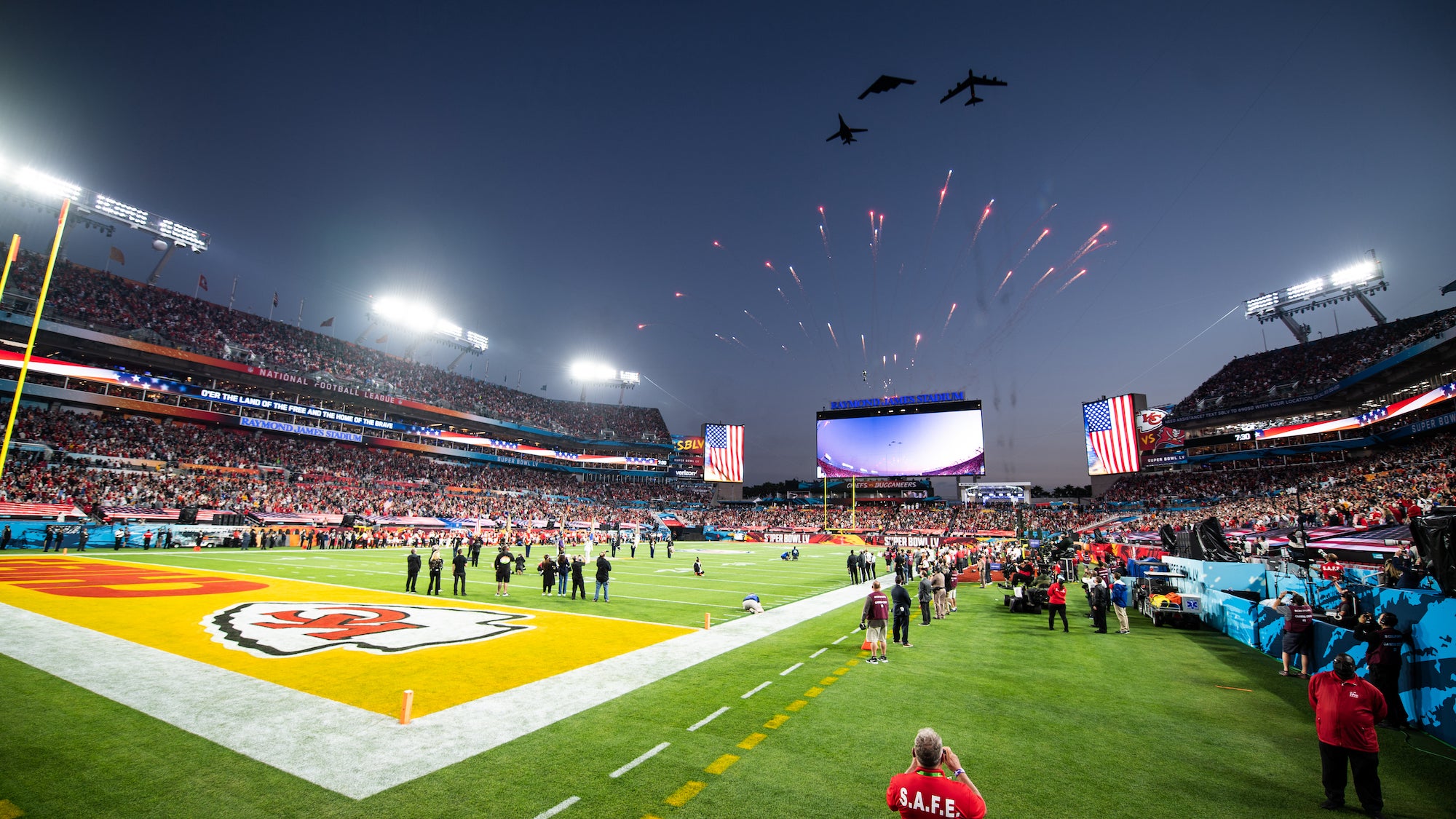The Super Bowl is coming around again which means traffic procedures, prior reservations, a big TFR and various other things to plan for.
Save the date
The Super Bowl officially takes place on February 13 2022, but restrictions will start to come in from at least February 9th, and probably be in place to around the 15th. You might also want to start planning for this soon because spots fill up fast and reservations are already being taken.
(By soon, we mean now).
Compared to the last two events held in Florida, traffic is expected to be even more limited this time around! Business Aviation flights are being recommended to plan and book ‘drop-n-go’ reservations and not overnight parking.
The main airports in the area will also more than likely be Prior Permission Required (PPR) for the game day weekend so get in touch with those FBOs and start confirming.
Which airports?
The big ones you definitely need reservations for in the area are these:
- KLAX/Los Angeles
- KVNY/Van Nuys
- KBUR/Burbank
- KLGB/Long Beach
- KHHR/Hawthorne Municipal
- KSNA/Orange Country
On a good note, KVNY/Van Nuys will be extending its operation hours on the Sunday and KLAX/Los Angeles over-ocean overnight ops restrictions will be available later into the night.
It is probably a good idea to get a reservation for any of these too if these if you think you’ll be heading there:
- KONT/Ontario
- KSBD/San Bernardino
- KSMO/Santa Monica

The LA Basin will see high traffic levels.
Where else?
A few other places. These aren’t included in the reservation program, but they will be heavily utilised for overflow traffic and for their parking spots because the ones above will be extremely limited on availability. All this means ramp congestion, delays in and out and the possibility that they are included in FAA initiatives to manage the traffic levels if it all gets too busy.
So keep an eye on:
- KPSP/Palm Springs
- KSAN/San Diego
- KLAS/Harry Reid
- KPHX/Phoenix Sky Harbour
- KSDL/Scottdale
Who to talk to for your reservation
Talk to your FBO. They are the ones with the slot allocations and will be able to keep you updated on any changes nearer the time.
There will be Special Air Traffic Procedures & FAA Initiatives…
The increase in operations mean delays, and delays mean unhappy airplanes with rapidly emptying fuel tanks. So, in attempt to reduce these and manage the traffic more efficiently there will be special procedures in place for the main, and the surrounding airports. Keep an eye out for info on these nearer the time.
ATC will also be under a lot of pressure, particularly in the LA basin airspace. The peak traffic times are expected to be:
- Arrivals: Feb 9 -12, 1000 to 1800 local, Feb 13 0900 to 1400 local
- Departures: Feb 13, 2000 to 0300 local, Feb 14 0700 to 2000 local
If you can avoid flying in the area during those times the do. It will save you (and ATC) a lot of hassle. If you can’t avoid it though then be prepared for the usual initiatives – from Ground Delay Programs to Airspace Flow Programmes, metering, holds and ground stops…
Route Structures will be in force
There are going to be preferred IFR arrival and departure routes to help ATC manage the traffic flows. These can change because it can be a bit of a dynamic situation. Keep an eye out for updates on them.
The TFR
The exact details will be out 10 days before the event in NOTAM form, but you can expect a 10 mile no-go ring around the event for all general aviation traffic and some other restrictions in a 30nm ring. Standard TFR stuff. This is usually active several hours prior to the event to at least an hour after.
KLAX will have TSA screening and gateway procedure in place during this time.

The TFR rings around the SoFi Stadium.
Anything else to think about?
Consider you alternates. Options are going to be limited and restricted because of the high traffic levels. Unless you are in an emergency situation, you’re going to need a plan in advance and know where you can go.
Consider your fuel. There are going to be BIG delays possible even with all the initiatives and reservations in place.
Check your documents. Ensure you have your pilot’s license, company ID (if applicable), applicable aircraft documentation, and access to copies of all reservations/confirmations. Increased security operations may involve ramp checks, security searches, or routing through a gateway airport for TSA screening.
Really plan in advance. We mean from about now to avoid disappointment and disruption. File your flight plan between 22 and 6 hours ahead of departure. Preferably nearer the 22 hours end of that limit to help ATC build their initiatives.
Keep the bigger picture in mind. Airspace and airports will be congested, ATC will be working hard, and there are going to be TFRs to think about as well. Know what is going on and what to expect before you get airborne.
The ball is in your court.
(I couldn’t think of a football related pun).
Check out the FAA’s Super Bowl Safety Plan here.
Get in touch with your FBO to make your reservations and start planning early.
Be prepared! There will be delays, high traffic levels and all the risks and threats that come with these. So… again… be prepared!
More on the topic:
- More: What’s the delay in the USA?
- More: US to require Covid tests for all international passengers
- More: US no longer limiting international arrivals to 15 airports
- More: Covid restrictions by US state
- More: Many US Bizav Airport Towers To See Hours Cut
More reading:
- Latest: More face scans at the US border for BizAv flights
- Latest: Greenland NAT Alternates: Dec 2025 Update
- Latest: Mexico Customs Surprises: Pills, Vapes, and Laptop Rules
- Safe Airspace: Risk Database
- Weekly Ops Bulletin: Subscribe
- Membership plans: Why join OPSGROUP?












 Get the famous weekly
Get the famous weekly 





